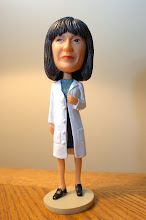Last week I talked about food recalls and promised I'd explain some of the things food manufacturers do to protect the food supply. One of those things is call HACCP (pronounced hās•sip). HACCP is an acronym for Hazard Analysis and Critical Control Points and it is a food safety management system used by almost every part of the food industry.
HACCP was developed in the 1960s by the Pillsbury Company while they were working with NASA to make sure the food for space flights would be safe. It was later adopted in 1973 by the USDA for low-acid canned foods and the FDA jumped on the bandwagon in 1995 for seafood products. Over the years mandatory compliance of HACCP has spread to meat and poultry products, eggs, and juices. Although not mandatory for the rest of the industry (yet), most food companies voluntarily comply and have instituted HACCP programs for their businesses.
How does HACCP make food safer? Well, it is a preventative food safety system which companies use to identify where problems are most likely to occur and use that information to control and monitor those places to prevent issues. It is not a zero-risk system but it does try to reduce the possibility of a problem occurring. The process for creating a HACCP plan is time consuming and complicated, so I'll just give you an overview.
A manufacturer reviews their processes from receipt of the raw materials all the way to shipping the finished products. By going through a series of decision trees, process control points (PCPs), quality control points (QCPs) and critical control points (CCPs) are identified. The CCPs are clearly the most important of the three and are analyzed (hence the name) to determine how to control them, monitor them & verify that the process is working. How is control defined? Regulations state control means that companies "take all necessary actions to ensure and maintain compliance with the criteria established in the HACCP plan." Which essentially means that you test, evaluate, modify (if necessary) and validate your plan in a continuous process. If something fails, a corrective action plan is in place and gets implemented so that the issue does not re-occur.
What hazards are we trying to control? Those that cause foodbourne illness, disease or injury which are separated into 3 categories: biological, chemical and physical hazards. Biological hazards are those like bacteria, viruses, pathogens & their toxins, chemical hazards include pesticides, antibiotics, fertilizers, aflotoxins, or cleaning chemicals and physical hazards are those like glass, wood, metal, bone, or pits. Considering there are only three categories of hazards, they are pretty all-inclusive.
This isn't the most glamorous of topics I realize, but the safety of our food supply is important and I feel it is important that the consumers of those products have some awareness of what the industry does to protect them. For those who want to know more about the details of HACCP, follow this link. There are other aspects of food safety that are done concurrent with HACCP plans and I'll be talking about those next week.
HACCP was developed in the 1960s by the Pillsbury Company while they were working with NASA to make sure the food for space flights would be safe. It was later adopted in 1973 by the USDA for low-acid canned foods and the FDA jumped on the bandwagon in 1995 for seafood products. Over the years mandatory compliance of HACCP has spread to meat and poultry products, eggs, and juices. Although not mandatory for the rest of the industry (yet), most food companies voluntarily comply and have instituted HACCP programs for their businesses.
How does HACCP make food safer? Well, it is a preventative food safety system which companies use to identify where problems are most likely to occur and use that information to control and monitor those places to prevent issues. It is not a zero-risk system but it does try to reduce the possibility of a problem occurring. The process for creating a HACCP plan is time consuming and complicated, so I'll just give you an overview.
A manufacturer reviews their processes from receipt of the raw materials all the way to shipping the finished products. By going through a series of decision trees, process control points (PCPs), quality control points (QCPs) and critical control points (CCPs) are identified. The CCPs are clearly the most important of the three and are analyzed (hence the name) to determine how to control them, monitor them & verify that the process is working. How is control defined? Regulations state control means that companies "take all necessary actions to ensure and maintain compliance with the criteria established in the HACCP plan." Which essentially means that you test, evaluate, modify (if necessary) and validate your plan in a continuous process. If something fails, a corrective action plan is in place and gets implemented so that the issue does not re-occur.
What hazards are we trying to control? Those that cause foodbourne illness, disease or injury which are separated into 3 categories: biological, chemical and physical hazards. Biological hazards are those like bacteria, viruses, pathogens & their toxins, chemical hazards include pesticides, antibiotics, fertilizers, aflotoxins, or cleaning chemicals and physical hazards are those like glass, wood, metal, bone, or pits. Considering there are only three categories of hazards, they are pretty all-inclusive.
This isn't the most glamorous of topics I realize, but the safety of our food supply is important and I feel it is important that the consumers of those products have some awareness of what the industry does to protect them. For those who want to know more about the details of HACCP, follow this link. There are other aspects of food safety that are done concurrent with HACCP plans and I'll be talking about those next week.





No comments:
Post a Comment